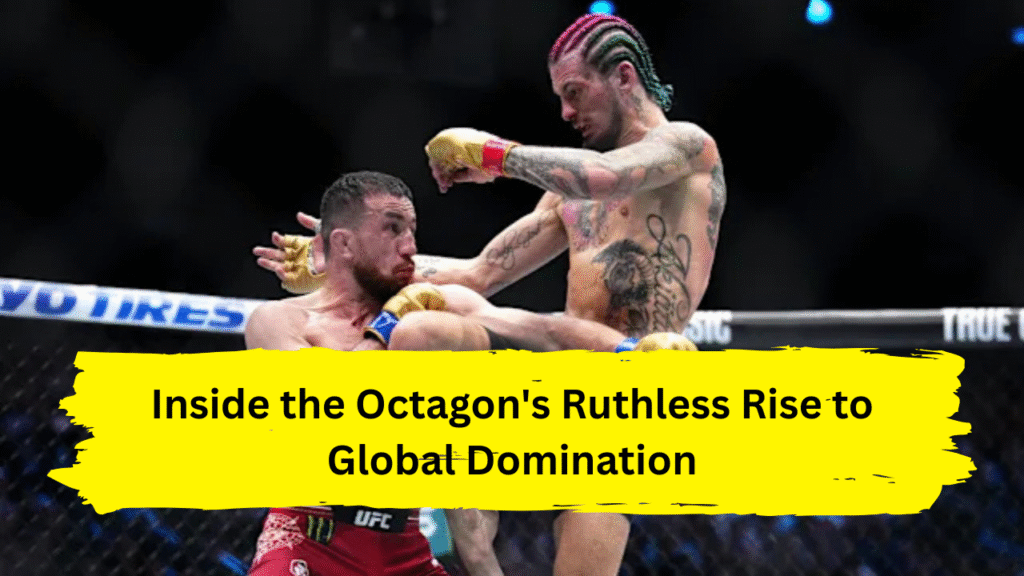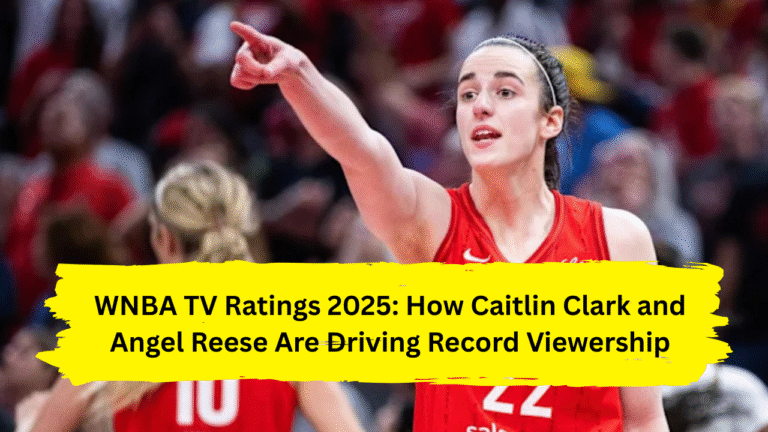
Discover the explosive journey of the UFC! From controversial beginnings to a billion-dollar empire, learn how mixed martial arts conquered the world. Dive into the science, superstars, and raw passion that define the Ultimate Fighting Championship. Ready to step inside the octagon? Read on!
Ever felt that primal jolt when two warriors collide? That heart-pounding, edge-of-your-seat intensity where skill meets sheer will? That’s the UFC – the Ultimate Fighting Championship. It’s more than just a sport; it’s a raw, unfiltered human drama playing out in an eight-sided cage. Remember when people dismissed it as barbaric? Today, it’s a global juggernaut, dominating pay-per-views, filling arenas worldwide, and minting superstars. How did a spectacle once banned and vilified become one of the planet’s most electrifying sports phenomena? If you’ve ever wondered what fuels this relentless machine, why its stars captivate millions, or simply crave the adrenaline rush of the fight game, buckle up. We’re diving deep into the UFC‘s blood, sweat, and billion-dollar glory. This is the story of how chaos was tamed, refined, and unleashed upon the world.
The Birth of a Beast: From Backroom Brawls to Mainstream Mayhem
Picture the early 90s. Martial arts were siloed – boxers boxed, wrestlers wrestled, jiu-jitsu practitioners grappled. The question was simple yet revolutionary: which discipline reigned supreme? Enter the UFC. Conceived as a no-holds-barred tournament, the first event in 1993 was shockingly raw. Minimal rules. No weight classes. No time limits. Royce Gracie, a slender Brazilian Jiu-Jitsu master, systematically dismantled larger, stronger opponents. It was revelation mixed with revulsion. Critics screamed brutality. Politicians moved to ban it. The UFC teetered on the edge of extinction, a pariah sport relegated to the shadows. The pain point was real: How could something so viscerally compelling survive its own notoriety? The answer wasn’t doubling down on chaos, but embracing structure. Visionaries like Dana White and the Fertitta brothers saw potential where others saw only carnage. They bought the failing promotion for a pittance and embarked on a mission: legitimize the sport without losing its soul. Implementing weight classes, strict rules (no headbutts, groin strikes, or hair-pulling), rounds, and rigorous safety protocols wasn’t selling out; it was building a future. They transformed a curiosity into a credible athletic competition, proving that controlled violence could be both art and sport.
Inside the Octagon: The Brutal Ballet of UFC Fighting
Step inside the iconic octagon. It’s not just a cage; it’s a pressure cooker where worlds collide. Forget the one-dimensional brawler stereotype. Modern UFC athletes are arguably the most complete fighters on Earth. Think about it: what other sport demands mastery of striking and grappling, explosive power and inhuman endurance, tactical brilliance and unshakeable mental fortitude – all while someone is actively trying to knock you unconscious or twist your limbs into unnatural positions? This is the UFC‘s core genius. A high-level bout is a frantic chess match played at lightning speed. A wrestler shoots for a takedown; a striker sprawls and fires knees. A BJJ black belt hunts for a submission from their back; their opponent rains down punches, desperate to escape the trap. It’s a constant, dizzying flow of transitions – standing to ground, striking to clinching, attack to defense. The sheer diversity of skills on display is mind-boggling. Can a devastating Thai boxer like Joanna Jedrzejczyk keep the fight standing against a relentless grappler? Can a powerhouse wrestler like Khabib Nurmagomedov drag a slick striker like Conor McGregor into deep water and drown him? This constant clash of styles, this high-stakes problem-solving under duress, is what makes every UFC fight uniquely compelling. It’s controlled chaos, a brutal ballet demanding respect.
Forging Modern Gladiators: The Making of a UFC Superstar
Who are these warriors who step into the spotlight? They aren’t born; they’re forged in fire. The journey from aspiring amateur to UFC contender is a grueling odyssey of sacrifice. Imagine years spent in dimly lit gyms, bodies pushed beyond breaking point, financial hardship, and the gnawing doubt that whispers, “Is this worth it?” The path often winds through regional promotions, fighting for peanuts and recognition, hoping a UFC scout sees that one highlight-reel knockout or slick submission. Once signed, the pressure intensifies tenfold. Fight camps are notoriously brutal – months of two-a-day training sessions, sparring wars, strict nutritional regimes, and cutting weight in ways that would make most shudder. It’s a life defined by discipline bordering on obsession. But physical prowess alone isn’t enough. The mental game is paramount. How do you silence the roar of 20,000 fans? How do you push through exhaustion when your lungs burn and your muscles scream? How do you bounce back from a devastating loss that’s played on loop across social media? The true UFC superstars – your Jon Joneses, Amanda Nuneses, Israel Adesanyas – possess an almost supernatural self-belief. They couple elite skill with captivating personalities, understanding that in the modern fight game, charisma sells just as hard as a left hook. They become larger-than-life figures, their triumphs and failures echoing far beyond the octagon.
The Empire of Adrenaline: UFC’s Billion-Dollar Blueprint
Let’s talk scale. The UFC isn’t just popular; it’s a meticulously engineered commercial powerhouse. Remember the days of scrambling for pay-per-view buys in smoky bars? Flash forward to the $4 billion sale to Endeavor in 2016, a figure that screamed mainstream validation. How did they build this empire? It was a multi-pronged assault. First, saturation through accessibility. The landmark deal with ESPN brought the UFC into millions of living rooms weekly, making Fight Nights a regular habit rather than a costly luxury. Then came global domination – relentless international expansion, cultivating stars from Brazil to Russia to Nigeria, and hosting massive events from Abu Dhabi to London to Sydney. They tapped into the digital age masterfully, building a colossal social media footprint (think Conor McGregor’s legendary trash talk) and launching the UFC Fight Pass streaming service, a treasure trove for hardcore fans. Sponsorships evolved from dubious energy drinks to partnerships with global giants like Venum, Monster Energy, and Anheuser-Busch. The UFC also pioneered the “Fight Week” experience, turning events into multi-day festivals with weigh-ins, fan expos, and press conferences dripping with drama. They understood that selling the story – the rivalries, the personalities, the stakes – was just as crucial as selling the fights. It’s a ruthless, data-driven machine fueled by adrenaline and ambition.
Why We Can’t Look Away: The Raw Nerve UFC Hits
What is it about the UFC that hooks us so deeply? Why do we willingly subject ourselves to the visceral tension of watching two humans battle? It taps into something ancient and fundamental within us. On one level, it’s pure, unadulterated spectacle. The athleticism is breathtaking – the speed, power, and technical wizardry displayed are superhuman. There’s an undeniable thrill in witnessing peak physical performance under the most extreme pressure. But it goes deeper. The octagon strips away pretense. It’s raw authenticity in a world often saturated with filters and facades. We see courage laid bare – the fighter rising after a knockdown, defending a choke until the brink of unconsciousness, pushing forward when every instinct screams to quit. It’s a pure test of will. We see human drama in its most concentrated form: triumph, heartbreak, redemption, rivalry. Think of Holly Holm silencing Ronda Rousey, or Georges St-Pierre returning after years to reclaim his throne. These moments resonate because they reflect universal struggles – overcoming doubt, facing fear, striving for greatness. The UFC offers a vicarious outlet for our own competitive spirits and a powerful narrative of human resilience. It asks a simple, compelling question: What are you made of?
The Future of the Fight Game: Where Does UFC Go From Here?
The UFC’s throne seems unshakeable, but the fight game never stands still. What’s next for the global leader? The horizon is buzzing with both opportunity and challenge. Expansion remains key – cracking massive untapped markets like India and Africa requires cultivating local heroes and tailoring the approach. The rise of rival promotions like the PFL and Bellator, backed by serious money, means the UFC must work harder to retain top talent and keep its product fresh. Expect even deeper integration of technology – think enhanced biometrics for fighters, immersive VR experiences for fans, and AI-driven fight analysis becoming commonplace. The athlete evolution continues too. We’re already seeing fighters becoming more complete earlier in their careers, blending disciplines seamlessly. Women’s divisions, once a novelty, are now powerhouse attractions; their growth shows no sign of slowing, demanding equal spotlight and pay. And then there’s the specter of crossover. The UFC’s flirtation with boxing megastars (hello, Mayweather vs. McGregor) proved the colossal appeal. Could we see more hybrid events blurring the lines? The core mission, however, remains unchanged: deliver the most compelling, high-stakes combat sports action on the planet. The UFC must keep innovating while protecting the raw intensity that made it a phenomenon. One thing’s certain: the octagon’s light won’t dim anytime soon.
The roar of the crowd, the clatter of gloves, the sheer, unyielding spirit on display – that’s the UFC. It’s a journey from outlaw spectacle to respected global titan, a testament to the power of athleticism, storytelling, and unbreakable human spirit. We’ve seen how science meets savagery inside the octagon, witnessed the making of modern gladiators, and peeked behind the curtain of its billion-dollar engine. It thrives because it connects with something fundamental in us: the awe of witnessing excellence under fire, the drama of conflict, and the timeless allure of the fight. Whether you’re a lifelong fan or a curious newcomer, the UFC’s relentless energy is impossible to ignore. So, the next time you hear the iconic theme music blast, ask yourself: Are you ready to feel that surge? Dive deeper, watch a Fight Night, follow a rising contender. The world of the UFC is waiting, pulsating with life, proving again and again why it remains the undisputed king of combat sports. The fight goes on.
Also Read: Latest Trending News




